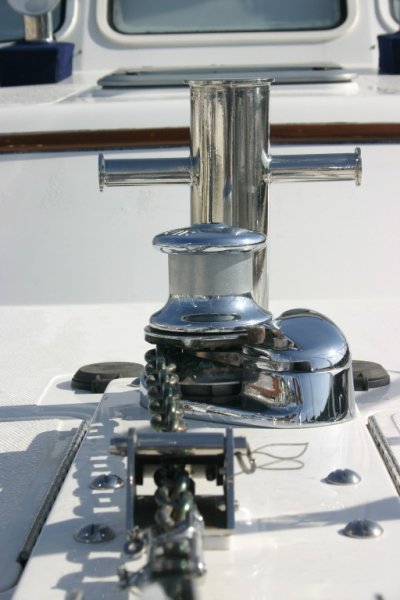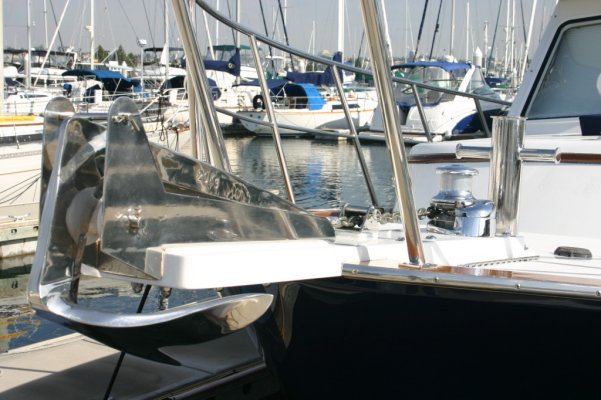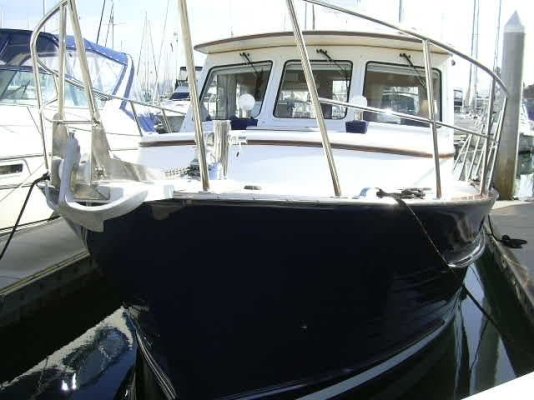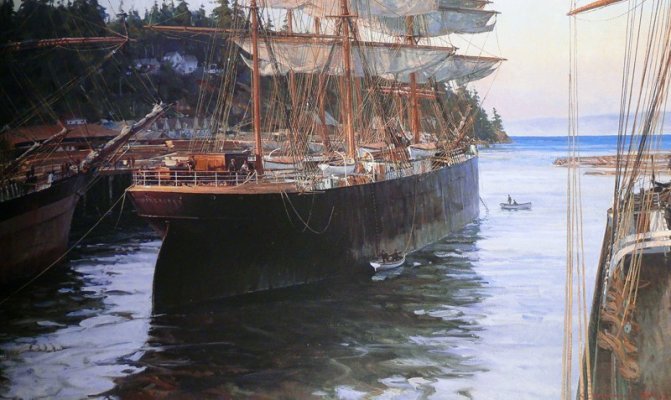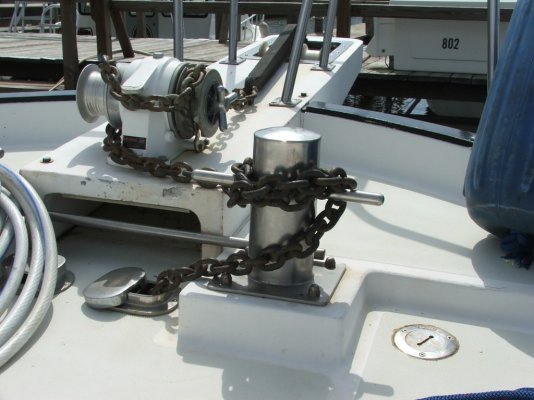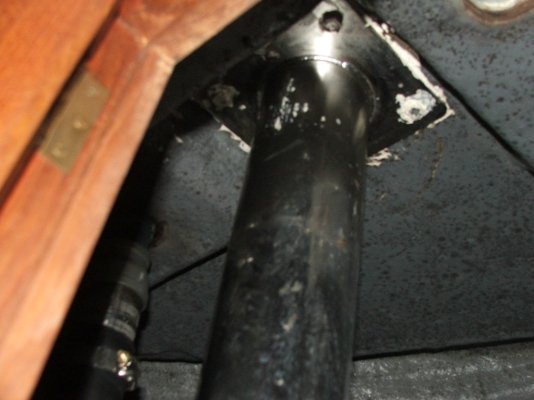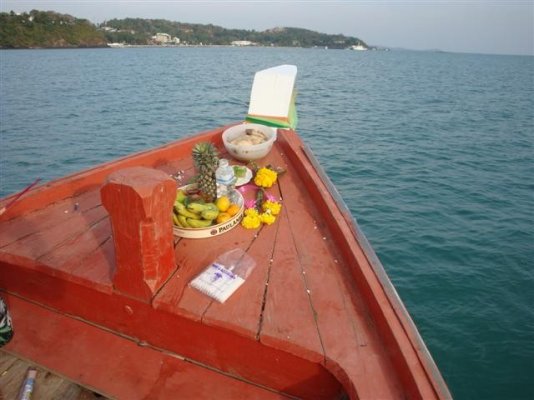SeaHorse II wrote:
Vertical windlass vs. a horizontal....There appears to be more line/chain "purchase" on the vertical's gypsy than on the horizontal. Any comments?
The installation instructions that came with our Lofrans Tigres state that the windlass must be mounted so that the angle of pull on the chain is 90 degrees or less. In other words the chain can come straight in to the top of the wildcat, or at some angle from below the top of the wildcat, but never at an angle that's higher than the top of the wildcat. Ours is just slightly below the top of the wildcat but not much. So it has a quarter-wrap around the wildcat, as did our original windlass. The Tigres is a very fast windlass, but we've never had a problem with the chain jumping or skipping in the wildcat with the quarter-wrap. Nor did we with the original, albeit much slower windlass.
So I don't think the typical quarter-wrap of a horizontal windlass and the half-wrap of the typical vertical windlass result in any differences in their ability to haul in chain.
As to the purchase of a line around the smooth gypsy drum of a windlass, since you can wrap the line around the drum as many times as you want, I don't believe there is any purchase advantage of a horizontal over a vertical or visa versa.
I don't think there is any real arguement between horizontal vs. vertical because they both have advantages for different boat configurations. The vertical is usually a cleaner installation with a much smaller footprint on deck. It seems to be very popular with sailboaters, for good reason. The horizontal is ideal for bow configurations that put the pulpit some distance above the deck since the horizontal is easily mounted on a block or frame to elevate it to the right height to accept the chain coming off the back of the pulpit.
As ohers have mentioned, maintanance can be easier with a horizontal windlass simply because everything is right there on deck.
But with regards to how well they deploy and retrieve an anchor rode, I don't think there is much difference between a well-designed and well-built vertical windlass and a good horizontal windlass. We use all-chain rode on our boat, and I don't think there would be much difference in chain handling between the two types of windlasses. The GB we used to charter had a vertical windlass built into the back of its pulpit and it deployed and retrieved the boat's all-chain rode just fine.
It may be that one style makes it easier to retrieve a nylon rode than the other, but I've not had any experience with that. The "stacked" vertical configuration like on Seahorse's boat makes a lot of sense if you're going to use a combination rode since the line gypsy and the wildcat are both in line with the pulpit rollers.
If we were to use a combination rode on our boat, we would most likely do what a lot of sailboaters we see do, which is pull in the nylon portion of the rode by hand until we got to the chain. I don't know if the wildcat on the Tigres will also pull in line or if they offer one that does. The offset line gypsy on the Tigres is great for hauling in the anchor trip line but as Eric noted it would put a nylon rode at a very awkward angle for retrieving, plus the rode hawse is on the opposite side of the windlass from the line gypsy.
With all-chain none of this is an issue, but if we wanted to use a combination rode we'd have to do some creative thinking as to the best way to retrieve the nylon portion of the rode.
-- Edited by Marin at 01:19, 2009-03-10
